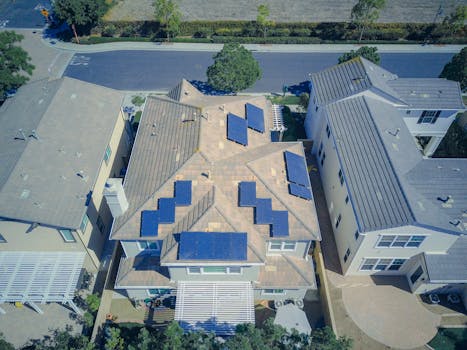“Unlocking Solar Savings: Understanding the Factors Behind Inverter Costs.”
The cost of solar inverters is influenced by several key factors, including the type of inverter (string, micro, or central), brand reputation, efficiency ratings, power output capacity, and additional features such as monitoring capabilities and warranties. Installation complexity and regional market conditions also play significant roles in determining overall costs. As the solar industry evolves, advancements in technology and economies of scale can further impact pricing trends, making it essential for consumers to understand these variables when evaluating solar inverter options.
Brand Reputation
When considering the costs associated with solar inverters, one of the most significant factors influencing price is brand reputation. The solar industry is populated with a variety of manufacturers, each offering different products that vary in quality, efficiency, and reliability. As consumers navigate this landscape, the reputation of a brand can serve as a crucial indicator of the value they can expect from their investment. Established brands often command higher prices due to their proven track record, extensive research and development, and commitment to quality assurance.
A brand’s reputation is typically built over years of experience in the market. Companies that have been in the solar industry for a long time tend to have a wealth of knowledge regarding the intricacies of solar technology. This experience allows them to produce inverters that not only meet but often exceed industry standards. Consequently, consumers may find that investing in a well-regarded brand can lead to long-term savings, as these products are often more reliable and efficient, reducing maintenance costs and increasing energy output.
Moreover, brand reputation is closely tied to customer service and support. Reputable manufacturers often provide comprehensive warranties and responsive customer service, which can be invaluable for consumers who may encounter issues with their solar systems. A strong warranty can mitigate the financial risks associated with inverter failure, as it often covers repairs or replacements. Therefore, while the initial cost of a well-known brand may be higher, the potential for reduced long-term expenses can make it a more economical choice in the grand scheme of solar investment.
In addition to reliability and customer service, brand reputation also influences the perceived value of the technology itself. Consumers are often willing to pay a premium for products that are backed by positive reviews and testimonials. This is particularly true in the solar market, where the performance of an inverter can significantly impact the overall efficiency of a solar energy system. Brands that consistently receive high ratings for their products tend to attract more customers, further solidifying their reputation and justifying their pricing.
Furthermore, the innovation and technology that a brand brings to the table can also affect its pricing. Companies that invest heavily in research and development are often at the forefront of technological advancements, producing inverters that incorporate the latest features and efficiencies. These innovations can lead to higher upfront costs, but they may also result in greater energy savings and improved performance over time. As such, consumers may find that the initial investment in a technologically advanced inverter from a reputable brand pays off through enhanced energy production and lower utility bills.
In conclusion, brand reputation plays a pivotal role in determining the costs associated with solar inverters. Consumers must weigh the benefits of investing in a well-established brand against the potential savings offered by lesser-known manufacturers. While the initial price may be higher for reputable brands, the long-term advantages—such as reliability, customer support, and technological innovation—often justify the expense. Ultimately, understanding the influence of brand reputation on solar inverter costs can empower consumers to make informed decisions that align with their energy needs and financial goals.
Inverter Type
When considering the costs associated with solar inverters, one of the most significant factors influencing price is the type of inverter selected for a solar energy system. Solar inverters are essential components that convert the direct current (DC) generated by solar panels into alternating current (AC), which is used by most household appliances. The three primary types of solar inverters are string inverters, microinverters, and power optimizers, each with its own unique characteristics and price points.
String inverters are the most common type used in residential solar installations. They are typically less expensive than other inverter types, making them an attractive option for homeowners looking to minimize upfront costs. However, the price of string inverters can vary based on their capacity and efficiency ratings. While they are generally reliable and straightforward to install, their performance can be affected by shading or orientation issues. This means that if one panel in a string is underperforming, it can impact the entire string’s output, potentially leading to lower overall energy production. Consequently, while string inverters may be budget-friendly, their limitations can lead to additional costs in terms of lost energy production.
On the other hand, microinverters offer a different approach to solar energy conversion. These devices are installed on each individual solar panel, allowing for independent operation. This means that if one panel is shaded or malfunctioning, it does not affect the performance of the others. As a result, microinverters can maximize energy production, particularly in installations where shading is a concern. However, this increased efficiency comes at a higher price point. Microinverters tend to be more expensive than string inverters, both in terms of initial purchase and installation costs. Therefore, while they can provide better performance in certain scenarios, homeowners must weigh the benefits against the higher investment.
Power optimizers represent a hybrid solution between string inverters and microinverters. These devices are installed on each solar panel but work in conjunction with a central string inverter. Power optimizers enhance the performance of each panel, mitigating the effects of shading and optimizing energy production. While they are generally less expensive than microinverters, they still come at a higher cost than traditional string inverters. The choice to use power optimizers often depends on the specific layout of the solar array and the homeowner’s budget.
In addition to the type of inverter, other factors can also influence the overall cost. For instance, the brand and warranty offered can significantly affect pricing. Well-established brands with a reputation for reliability may command higher prices, but they often provide better customer support and longer warranties. Furthermore, installation costs can vary based on the complexity of the system and the expertise of the installer.
Ultimately, the choice of inverter type is a critical decision that can impact both the initial investment and long-term performance of a solar energy system. Homeowners must carefully consider their specific energy needs, the layout of their property, and their budget when selecting an inverter. By understanding the differences between string inverters, microinverters, and power optimizers, consumers can make informed decisions that align with their energy goals and financial considerations. In this way, the type of inverter chosen not only influences the upfront costs but also plays a crucial role in the overall efficiency and effectiveness of a solar energy system.
Efficiency Ratings
When considering the costs associated with solar inverters, one of the most significant factors influencing price is the efficiency rating of the inverter itself. Efficiency ratings are crucial because they directly impact the overall performance of a solar energy system. In essence, the efficiency of an inverter determines how effectively it converts the direct current (DC) generated by solar panels into alternating current (AC), which is the form of electricity used in homes and businesses. Higher efficiency ratings mean that more of the energy produced by the solar panels is utilized, leading to greater energy savings and a quicker return on investment.
Typically, solar inverters are rated based on their efficiency percentage, with most modern inverters boasting efficiencies between 95% and 99%. This means that for every 100 watts of DC electricity produced, 95 to 99 watts are converted into usable AC electricity. As one might expect, inverters with higher efficiency ratings tend to come with a higher price tag. This is largely due to the advanced technology and materials used in their construction, which allow for better performance and reliability. Consequently, when evaluating the cost of a solar inverter, it is essential to consider not only the initial purchase price but also the long-term benefits associated with higher efficiency.
Moreover, the efficiency of an inverter can be influenced by various factors, including temperature, load conditions, and the specific design of the inverter itself. For instance, inverters that operate at higher temperatures may experience a drop in efficiency, which can affect overall system performance. Therefore, it is vital to select an inverter that is designed to handle the specific environmental conditions of the installation site. This consideration can lead to additional costs, as inverters designed for higher efficiency in challenging conditions may be more expensive.
In addition to the inherent efficiency of the inverter, the overall system design plays a crucial role in determining how effectively energy is harnessed and converted. For example, the configuration of solar panels, the orientation and tilt of the installation, and the quality of the wiring can all impact the efficiency of the inverter. As such, investing in a high-efficiency inverter may not yield the expected benefits if the rest of the system is not optimized. This interconnectedness highlights the importance of a holistic approach when designing a solar energy system, as every component must work in harmony to achieve maximum efficiency.
Furthermore, it is essential to consider the inverter’s performance over time. Many manufacturers provide warranties that cover efficiency degradation, which can be a critical factor in assessing long-term value. Inverters with longer warranties often indicate a higher level of confidence in their durability and efficiency, which can justify a higher upfront cost. As a result, consumers should weigh the potential savings from increased efficiency against the initial investment, taking into account the expected lifespan and performance guarantees.
In conclusion, the efficiency rating of a solar inverter is a pivotal factor influencing its cost. Higher efficiency ratings typically correlate with advanced technology and materials, leading to increased prices. However, the long-term benefits of improved energy conversion and savings can outweigh these initial costs. By understanding the relationship between efficiency, system design, and overall performance, consumers can make informed decisions that align with their energy needs and financial goals. Ultimately, investing in a high-efficiency inverter can lead to significant returns over the lifespan of a solar energy system, making it a worthwhile consideration for anyone looking to harness the power of solar energy.
Installation Costs
When considering the overall investment in solar energy, installation costs play a crucial role in determining the total expenditure associated with solar inverters. These costs can vary significantly based on several factors, which ultimately influence the price of the solar inverter system. Understanding these elements is essential for homeowners and businesses alike, as it allows for more informed decision-making when transitioning to renewable energy sources.
One of the primary factors affecting installation costs is the complexity of the installation site. For instance, a roof with a steep pitch or an unconventional design may require additional labor and specialized equipment, thereby increasing the overall cost. Similarly, if the installation site is located in a hard-to-reach area, such as a remote location or a multi-story building, the logistical challenges can lead to higher expenses. In contrast, a straightforward installation on a single-story home with a standard roof can be completed more efficiently, resulting in lower costs.
Moreover, the type of solar inverter selected can also impact installation expenses. There are various types of inverters available on the market, including string inverters, microinverters, and power optimizers. Each type has its own installation requirements and associated costs. For example, microinverters, which are installed on each individual solar panel, may require more labor and time to install compared to a single string inverter that connects multiple panels. Consequently, the choice of inverter technology can significantly influence the overall installation cost.
In addition to the type of inverter, the size of the solar system is another critical factor. Larger systems typically require more extensive installation efforts, which can drive up labor costs. This is particularly true if the installation involves multiple panels and complex wiring. Conversely, smaller systems may be more straightforward to install, resulting in lower labor costs. Therefore, potential solar energy users should carefully assess their energy needs and system size to understand how these factors will affect their installation expenses.
Another important consideration is the local labor market and regional differences in installation costs. Labor rates can vary widely depending on geographic location, with urban areas often experiencing higher costs due to increased demand for skilled labor. Additionally, local regulations and permitting processes can also influence installation costs. Some regions may have more stringent requirements, necessitating additional time and resources to ensure compliance. As a result, it is essential for prospective solar users to research local installation companies and obtain multiple quotes to gain a clearer understanding of the potential costs involved.
Furthermore, the availability of incentives and rebates can also play a significant role in offsetting installation costs. Many governments and utility companies offer financial incentives to encourage the adoption of solar energy, which can help reduce the overall investment required for installation. By taking advantage of these programs, homeowners and businesses can significantly lower their upfront costs, making solar energy more accessible and appealing.
In conclusion, installation costs for solar inverters are influenced by a variety of factors, including site complexity, inverter type, system size, local labor markets, and available incentives. By understanding these elements, individuals can make more informed decisions regarding their solar investments, ultimately leading to a more efficient and cost-effective transition to renewable energy. As the demand for solar energy continues to grow, being well-informed about installation costs will empower consumers to navigate the complexities of the solar market with confidence.
Q&A
1. **What factors influence the price of solar inverters?**
The price of solar inverters is influenced by factors such as inverter type (string, micro, or central), power output capacity, efficiency ratings, brand reputation, and additional features like monitoring capabilities and warranties.
2. **How does inverter type affect cost?**
Different inverter types have varying costs; for example, microinverters tend to be more expensive than string inverters due to their advanced technology and individual panel optimization.
3. **Does the brand impact the price of solar inverters?**
Yes, well-known brands with a reputation for quality and reliability often charge higher prices compared to lesser-known brands, reflecting their investment in research, development, and customer support.
4. **How do installation costs factor into the overall price of solar inverters?**
Installation costs can significantly affect the overall price, as professional installation is often required for optimal performance and safety, adding to the total expenditure beyond just the inverter purchase.
Conclusion
The cost of solar inverters is influenced by several factors, including the type of inverter (string, micro, or central), brand reputation, efficiency ratings, power output capacity, additional features (such as monitoring capabilities), installation complexity, and warranty offerings. Market demand, technological advancements, and regional pricing variations also play significant roles in determining the overall price.




